Cleaning times and storage methods for celery
A culture such as celery is of great value, since the plant is a real storehouse of vitamins and trace elements. But here and now you are by no means attending a lecture on the beneficial properties of this root crop, but want to know when to harvest and how to store it correctly for a long time.
Well, let's talk about this!
Important! In this material, we will focus mainly on the timing of collection and storage methods for root celery. Let's also pay a little attention to stalked celery. But there is no point in talking about the leaf variety, because all greens are harvested and stored in the same way.
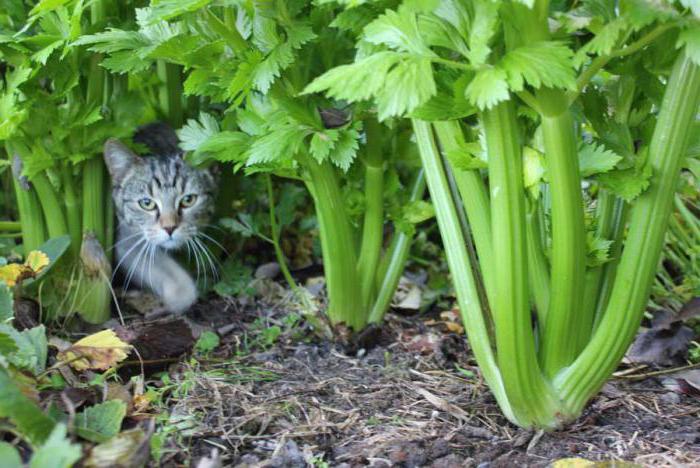
Content
When to remove celery root from the garden: optimal harvest time
Root celery has one of the longest growing periods (up to 120-150 days), moreover, it is a short-day plant.
In other words, namely in conditions shorter daylight hours and cool autumn weather celery active builds up its mass and accumulates all their nutrients.
Important! In summer, in hot weather, celery does not grow!
As for the signs of ripening, it is very simple to visually determine that the root celery is ready for harvesting: the root crop will be almost completely on the surface, and only its roots in the ground.
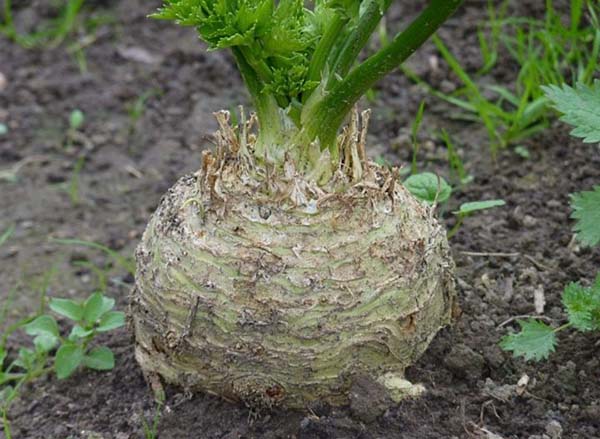
In any case, you need to have time to dig up the crop before the onset of stable frosts (small, nighttime up to -3 ..- 6, he is not afraid), otherwise such (slightly frozen) celery will not be stored for a long time.
Thus, the approximate harvesting time for root celery in the Middle Lane (Moscow region) is the end of September or the first half of October (as a rule, it is dug up somewhere in the beginning of October).
Video: cleaning and storing root celery - timing and methods
How to properly remove (dig) root celery from the garden and prepare it for storage
You need to dig out the root celery as carefully as possible so as not to damage the tubers. To do this, at a distance of 10-15 cm from the tuber, you need to dig in with a shovel (or use a pitchfork) and remove (pull) it out of the ground with your hands.
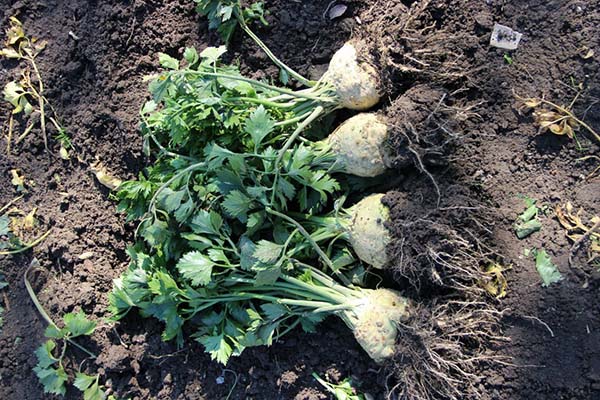
Then you need to prepare the tubers for storage, namely:
- clean (shake off) the tubers from the ground;
- wash in water and then dry in the sun for 1-1.5 hours;
- cut off the tops, leaving 2-3 centimeter petioles (Do not damage the growth point in any way!);
Young leaves (located in the center of the rosette) of root celery can be used quite similarly to leaf celery.
- trim the roots, shortening them to 1.5-2 cm;
By the way! Celery roots can also be used to make vegetable broths, for example.
- let the places of the cuts dry slightly so that they do not rot, putting them to dry in a shaded room, preferably on a towel;
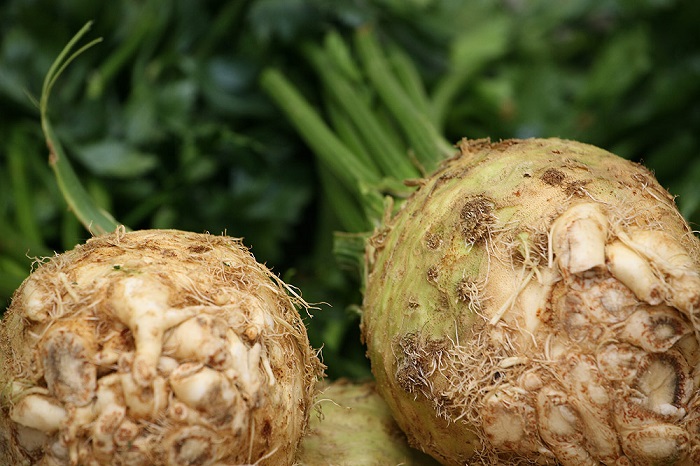
- store in a basement or cellar, refrigerator or freezer.
Interesting! Some summer residents do not wash celery before storing and do not even cut the roots.
In principle, a working option if you sprinkle them with sand. In other cases, you still have to wash and shorten the roots.
How to store root celery: long-term storage methods
The correct storage will ensure you have a celery harvest for the entire period until the next harvest.
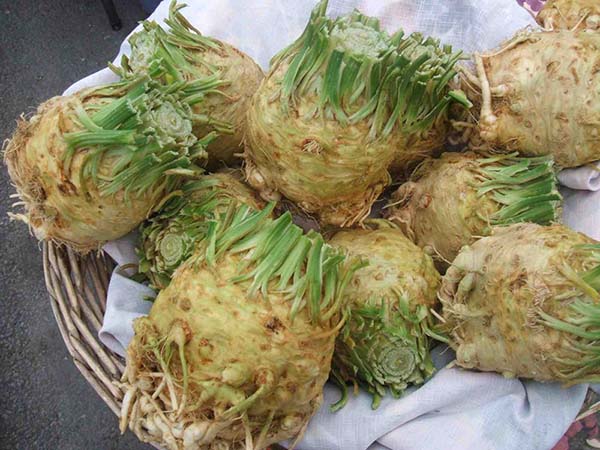
So, root celery can be stored fresh (up to 2-4 months, in the refrigerator - from a week to a month), frozen (up to a year), and even longer in dried (most conveniently dried in an electric dryer) or canned (salted).
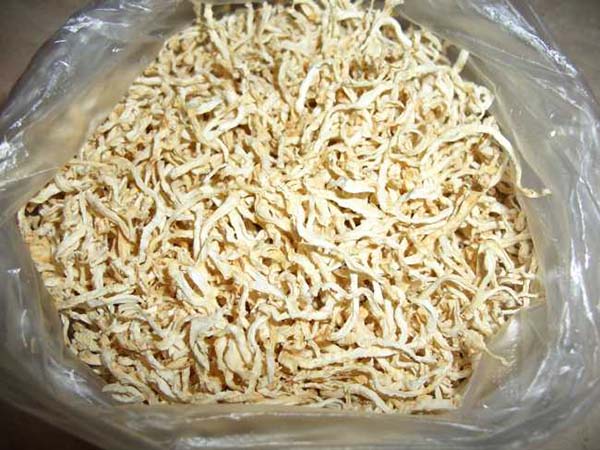
In principle, celery can be store like carrots (ideally in the sand) or beets.
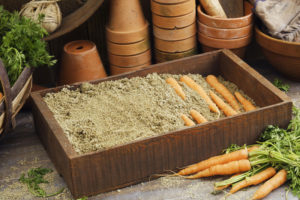
Fresh
The guarantee of long-term storage of any fresh vegetables and fruits is a stable temperature (0 .. + 4) and humidity (80-90%).
As for storage space, it could be like a cellar or basement (if you are the owner of a private house or the owner of a garage), and fridge (if you live in an apartment and have a garden in the country).
According to most gardeners, the most reliable way to keep root celery fresh in a basement or cellar is to store it. in sand... Namely, only the root system is poured with sand, the tuber itself does not need to be covered.
Wrapping tubers is an equally popular storage method. in cling film... As such, you can put the root vegetables in the same refrigerator.
In general, root celery will keep well in perforated cellophane bags (ventilation holes).
Freezing
If you don't have a cellar or basement, the refrigerator is full of other products, and you want to keep the celery longer, then the freezer comes to the rescue.
So, in order to freeze celery for the winter, you need to wash it, dry it, cut it (for example, into strips), place it in bags or containers for freezing and put it in the freezer.
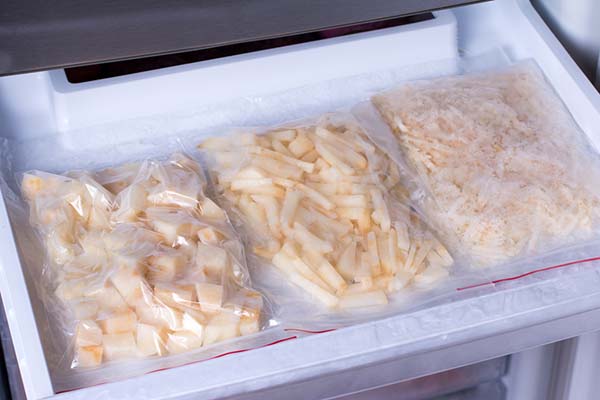
In the future, use for adding to soups and frying.
Features of harvesting and storing stalked celery
There are no nuances when cleaning and storing stalked celery (compared to root celery), except that you only need to remove it after the petiole bleaching process (unless you have a self-bleaching variety, of course).
In general, even the timing of harvesting stalked celery coincides with the root one, but it is better to have time to remove the stalked variety before the first frost begins (it is more tender).
Important! If you do not bleach the petioles, they will be less juicy and more pronounced bitterness will be present in them.
Advice! Covering the petioles from the sun's rays (bleaching) should be started 2-3 weeks before harvesting.
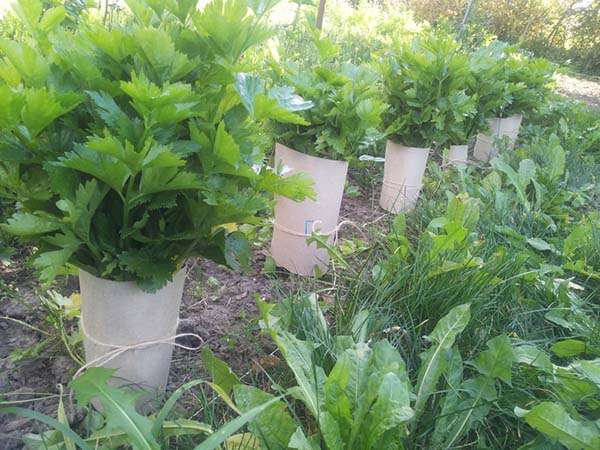
As for the storage methods for stalked celery, you can:
- keep fresh in the basement or refrigerator (eg, wrapped in foil or paper and a plastic bag);
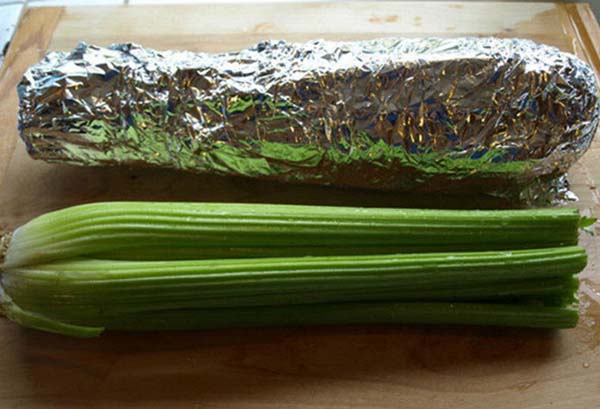
Storage idea! First you need to dry the petioles on a towel (to get rid of droplets of moisture), and then fill the can, close hermetically with a lid and put away in a dark and cool place (refrigerator or cellar).
The author of the following video suggests storing stalked celery in the sand (in the wet) similar to root.
Video: how to preserve stalked celery
- cut and to freeze.
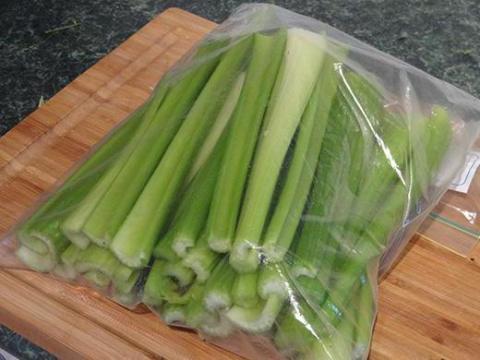
- Of course, petioles, like roots and leaves, can also dry out.
- But it's better if you canning or salting (dozens of recipes).
As for the use, then fresh petioled celery is primarily suitable for making salads and juices, and frozen - for adding to the first and second courses (including frying), dry petioles - as an aromatic additive to dishes.
Video: harvesting and storing stalked celery
Growing celery at home on a windowsill
Root celery tubers after digging can be put at home for forcing greens.
For more information on how to do this, see the video below.
Video: how to grow celery on a windowsill
Celery is a very healthy crop. Therefore, if you managed to grow a rich harvest, try to do everything to preserve this healthy vegetable, and then your diet will be as varied as possible even in winter. Good luck!

